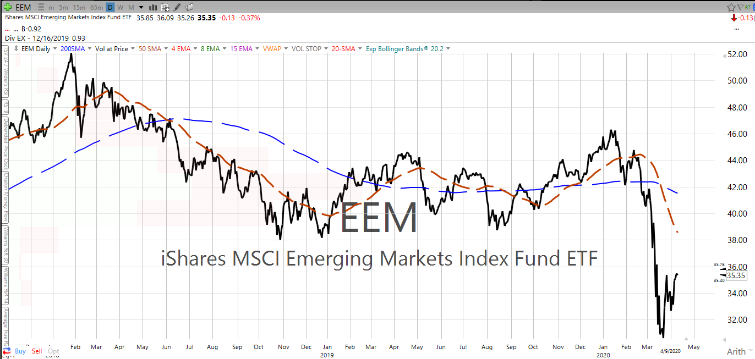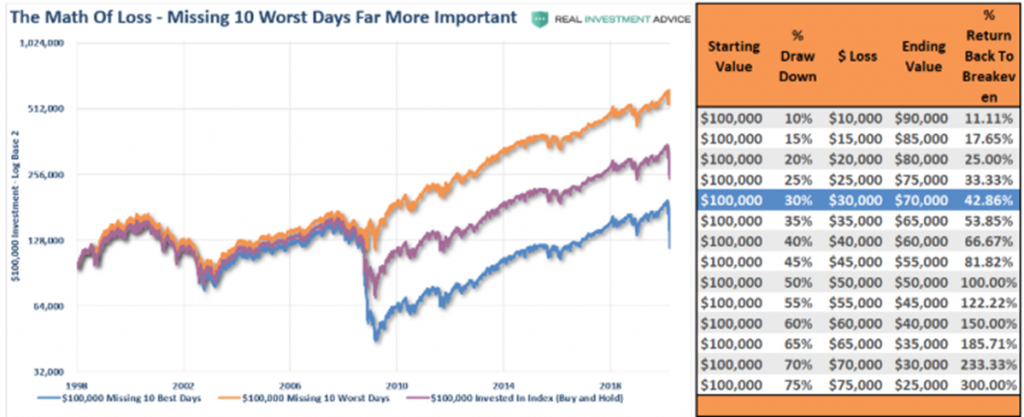Federal Reserve Develops $2.3 Trillion Program to Support Households and Local Governments… Building on its Main Street Lending Program, the central bank announced that more entities would be eligible for favorable loans.
What it means – The numbers are so big they almost defy understanding. Without getting lost in the weeds, the Fed is trying to stop a financial train wreck where the first cars to go off the rails are personal and retail business income, followed by suppliers and lenders, and then cities and states that rely on tax receipts. The central bank promised to backstop bank loans to households and businesses, with the provisions that payments can be deferred for months and the interest rate will presumably be 1%.
Whether or not the various programs will stop the wreck remains to be seen. There is definitely one group that will win – banks. The Fed programs work as guarantees on loans made by banks. The central bank expects banks to make millions of loans, then sell 95% of each loan to a facility set up by the Fed and hold onto the remaining balance. This is supposed to give the banks a little skin in the game, but the entire balance is guaranteed by the guys with the printing press. With four-year Treasuries trading at about 0.32%, banks will hold billions of dollars’ worth of bonds at an immediate premium. That’s how you create guaranteed profits and ensure that banks remain solvent.
As for large cities and states, the Fed will set up a facility to buy their debt outright. The program will create winners and losers, with small municipal bond issuers left out of the mix and required to pay very high interest rates to issue bonds in the months to come.
Initial Jobless Claims at 6.6 Million for the Week… The record-setting number added to the 3.5 million last week. The three-week total is now 11 million.
What it means – Think of it as coronageddon. We’ve created financial devastation like the world has never seen. There’s no way to fully grasp the affects until they work through the system. The National Multifamily Housing Council reports 31% of renters didn’t pay anything toward their rent on April 1, up from the normal 20%. The numbers will get worse in May.
Then there’s commercial real estate. WeWork is missing rental payments on properties, as are thousands of other businesses large and small. The train wreck the Fed is trying to stop is already happening. Expecting a fast return to normalcy is optimistic at best. Having begun in China, its restart has just begun after three months. Economic activity has been halved.
Saudis and Russians Reach a Deal on Oil, No One’s Happy… OPEC, led by Saudi Arabia, joined with a group led by Russia, inclusively known as OPEC+, to cut oil supply by 10 million barrels per day.
What it means – The Saudis and Russians have been feuding over supply cuts for months, and both producers turned on the spigots full blast last week. Now they’re touting a deal that will cut production by 10 million barrels per day, or about 10%. Most market watchers say it’s not nearly enough.
Goldman estimates that demand has fallen by 35 million barrels per day, or 35%, so even at the reduced production levels the world will still be awash in oil. Besides, there is nowhere to store it. Investors appeared to agree. They sold oil after the pact was announced, driving the price down 8% to about $22 per barrel. Watch out for more pain in the oil patch. Always a boom or bust industry, expect more bankruptcies and consolidation in the weeks ahead.

Not so obvious to investors is their allocation to international equities. Emerging markets are dependent on commodities in general and oil to maintain loan payments.
Typical portfolio diversification practices maintain exposure to this asset class which has been declining since January 2018. We view emerging markets (EEM) as having higher than normal risk and do not currently own it.
“It’s Time to Buy…” With stocks off the high and the recent rally, friendly neighborhood brokers and advisors are promoting buying into this market.
What it means – This is a common mantra for financial advisors assuming that the past ten-year bull market is resuming. However, this time is different. The stock buybacks inflating earnings are being reduced or completely stopped along with the halting of our economy. Fifteen million unemployment claims in a three-week period will not turn around in a month. The Atlanta Federal Reserve President has reported we are already in a recession and unemployment will rise to levels not seen since the decession. Even Mr. Powell has waked up. Federal Reserve Chairman Jerome Powell said Thursday the U.S. economy is in an emergency and is deteriorating “with alarming speed.”
Along with consumers depleting savings, businesses have been burning through cash reserves attempting to survive.
The next message you will hear is don’t get out of the market. “You will miss out on the best days.” Psst. The “best days” always occur at the bottom of bear markets and big losses. It is more important to preserve capital and miss out on the worst days so you will have funds to buy up bargains. If you don’t believe the next chart, consider the advice of billionaire Marc Cuban. “I was in a lot of cash, and I’m trying to get more cash.”

The blue highlight shows, as of Friday’s close (March 20, 2020), investors will need a more than 40% return just to get back to even.
Coronavirus Deaths Remain Small… Around 2.9 million people die in the U.S. every year, with 220,000 to 280,000 perishing every month. The 4,000 coronavirus deaths in March represented an estimated 2% of normal deaths for that month. If the number of deaths reach Dr. Fauci’s recent high target of 60,000, then we will have about the same number of deaths from coronavirus this year as influenza, and the number will be about 2% of all deaths.
In a related issue, the CDC issued guidance to healthcare providers instructing them to count all deaths as COVID-19 related if the patient either had COVID-19 or was suspected of having the disease. Given that COVID-19 is a form of the flu, it’s likely that deaths that would have been attributed to other flus will be counted under COVID-19.
Data supplied by HS Dent Research
“When the facts change, I change my mind.
What do you do, sir?” ~ John Maynard Keynes
Our plan is “the plan will change.”
What is your plan?
Relative strength measures the price performance of a stock against a market average, a selected universe of stocks or a single alternative holding. Relative strength improves if it rises faster in an uptrend, or falls less in a downtrend. It is easily applied to individual positions in your portfolio and to sectors and asset classes.
A copy of our form ADV Part 2 is available online.
WARNING: All e-mail sent to or from this address will be received or otherwise recorded by the Investor Resources, Inc. corporate e-mail system and is subject to archival, monitoring and/or review, by and/or disclosure to, someone other than the recipient.
This message is intended only for the use of the person(s) (“intended recipient”) to whom it is addressed. It may contain information that is privileged and confidential. If you are not the intended recipient, please contact the sender as soon as possible and delete the message without reading it or making a copy. Any dissemination, distribution, copying, or other use of this message or any of its content by any person other than the intended recipient is strictly prohibited. Investor Resources, Inc. has taken precautions to screen this message for viruses, but we cannot guarantee that it is virus free nor are we responsible for any damage that may be caused by this message.
Investor Resources, Inc. only transacts business in states where it is properly registered or notice filed, or excluded or exempted from registration requirements. Follow-up and individualized responses that involve either the effecting or attempting to effect transactions in securities, or the rendering of personalized investment advice for compensation, as the case may be, will not be made absent compliance with state investment adviser and investment adviser representative registration requirements, or an applicable exemption or exclusion.

